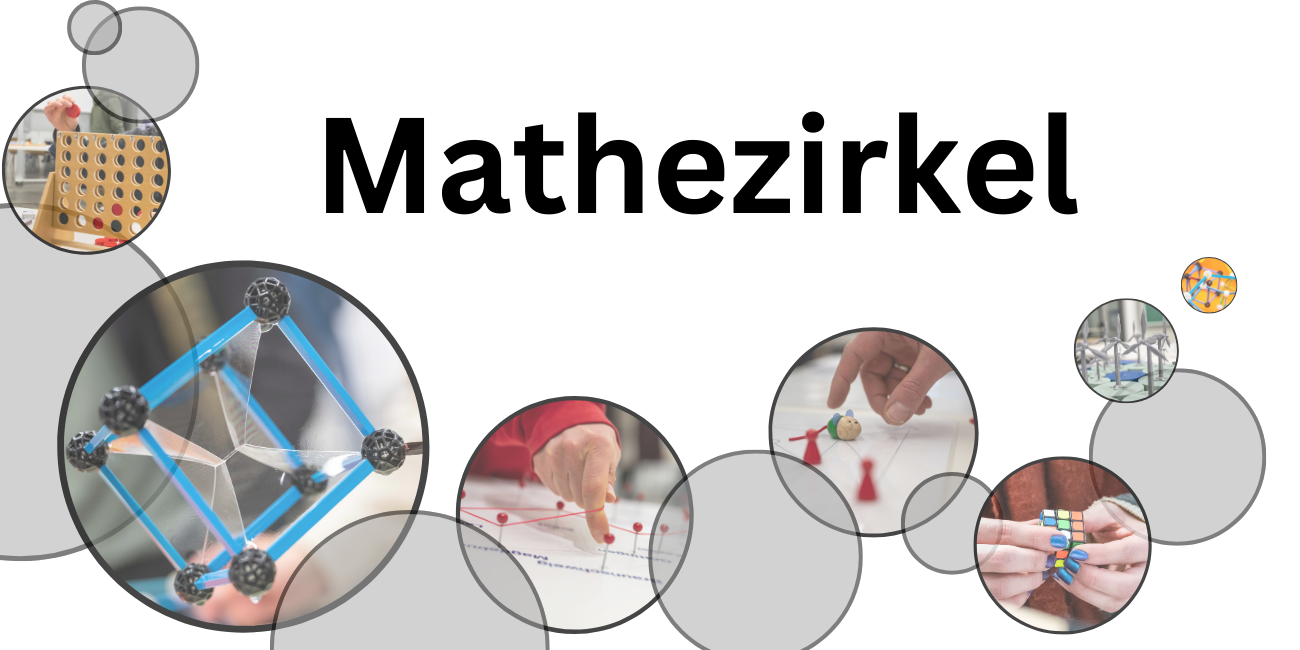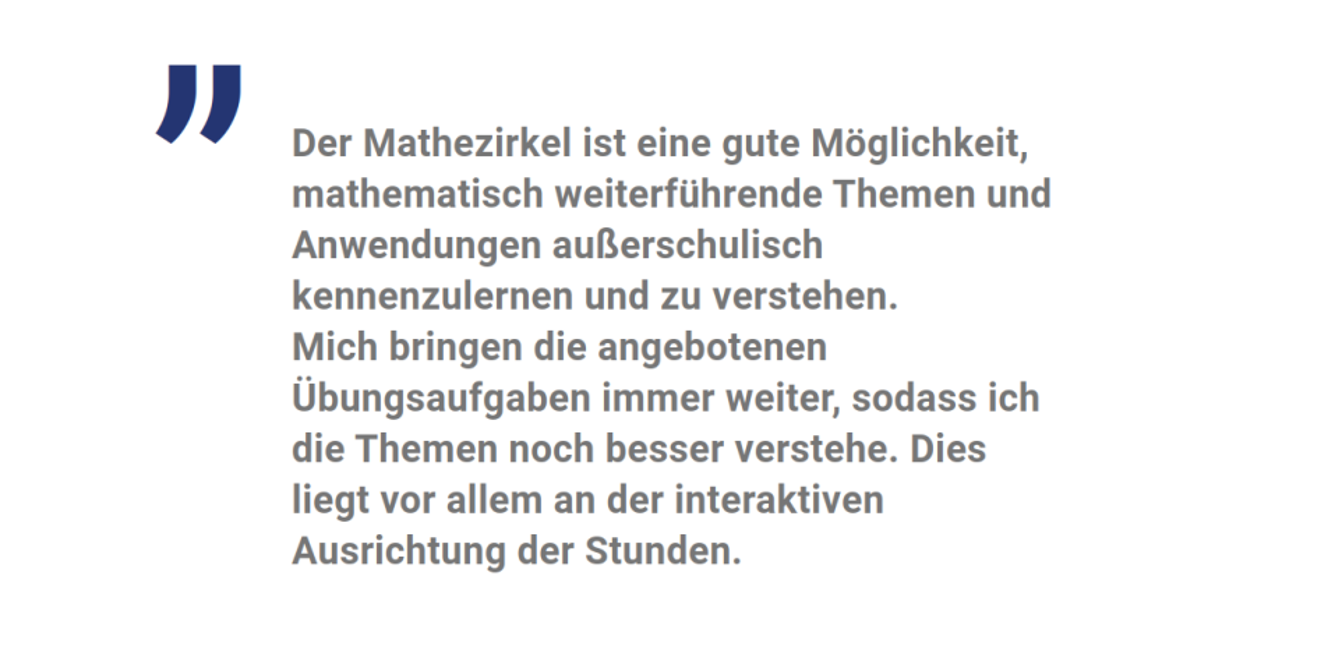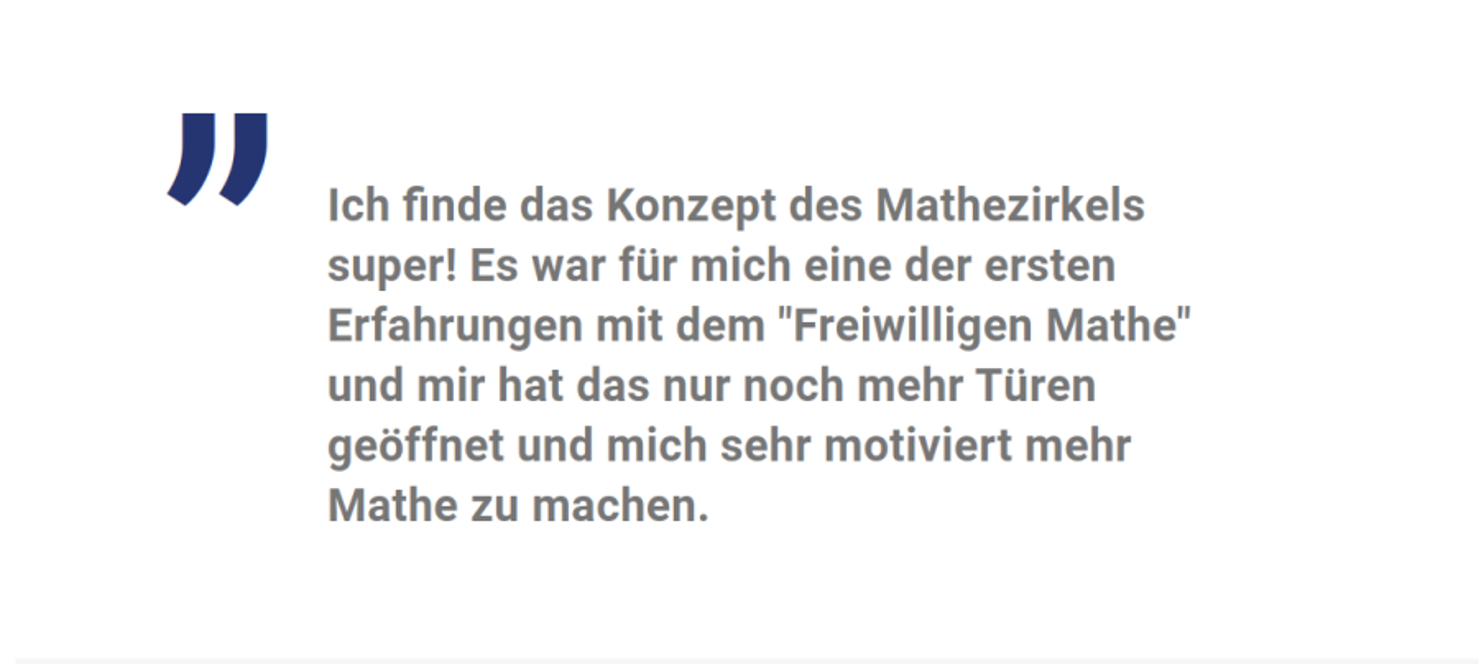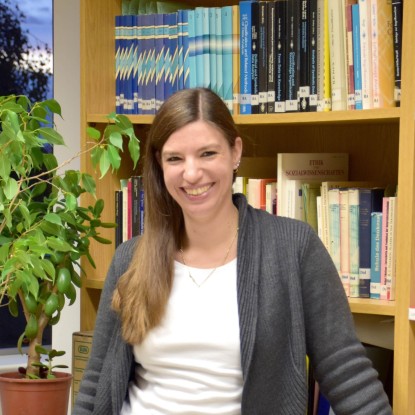When: From 27.10.25 every Monday from 4.30 pm to 6 pm
Where: S2|15 4th floor room 401 (Schlossgartenstraße 7).
We kindly ask for registration via the contact formular.
What is mathematics? Thrilling insights into the world of mathematics
Many people would probably answer this question with something like “arithmetic”, “formulae” or “numbers”. As the language of science, maths often takes on this role. It is used in a wide variety of sciences, from the statistical analysis of surveys and the measurement of the world to the theory of the Big Bang.
Mathematics itself is at least as diverse as its areas of application.
In addition to arithmetic, formulae and numbers, there is much more to discover in the world of mathematics. In the maths circle, we want to go on an excursion into a different area of mathematics every week. Between formalities and puzzles, between symmetry and chance, between models and abstraction, we will deal with questions, methods and applications from the most diverse areas of maths. Mathematics provides answers to astonishing observations, but it also raises questions of its own. In short:
There is much to discover in mathematics, much to understand and even more (open) questions to answer.
Most of the sessions are independent of each other. You are therefore welcome to pick out the most exciting topics and can easily return if you have to take a break due to illness or time constraints. Every week we want to delve into a new area of maths so that we can say at the end:
“Mathematics is much more than ”just“ arithmetic, formulae and numbers.”
What former participants have to say
Registration
In the summer term 2023 we talked about graphes:
At first glance, graphs are rather inconspicuous mathematical structures: a set of points and a set of edges that connect two points with each other. The points can represent bus stops, for example, and two of them are connected if they are directly neighbouring on a bus route. Or the dots represent possible positions in a game of chess, and two dots are connected if you can move from one position to another with one move. Or the dots represent web pages, and a connection between two dots represents a link from one page to another.
Graphs can therefore be used to model a variety of concrete problems. Once again, maths is thinking ahead: knowledge about general graphs can be applied to all these concrete problems. For example, we will look at the question of whether you can draw any graph in such a way that no edges cross (no, but how do you find out whether this is possible for a particular graph? And how do you draw it if it is possible?) The house of St Nicholas will appear, but also randomly generated graphs. We will do exact maths, but also see some very practical applications.
The individual sessions are thematically linked and in some cases build on each other. However, if you are unable to attend individual sessions, you can still join in again. No special prior knowledge is required, the most important thing is an interest in the topic and a willingness to familiarise yourself with more complicated arguments.
In the winter term 2022/23 we talked about coding theory:
The QR code on this page is readable for your smartphone if you cover up to 30% of the area (or paste over it with another QR code – try it out!). It doesn't matter which 30% is falsified. How does it work?
This brings us right into the topic we dealt with in our maths circle: Coding theory.
Wherever information is stored or transmitted, errors can occur, be it a torn page in a book, a noisy radio signal or a scratch on a CD. Clever mathematical processes can not only recognise such errors, but even correct them. Mobile phone connections, hard drives, USB sticks, Bluetooth, QR codes, ISBN numbers – our everyday lives are now full of error-correcting codes that we don't notice precisely because they work so well.
In weekly sessions, we learnt the mathematical basics of coding theory and finite fields and implemented some practical applications ourselves. The participants showed great interest.





